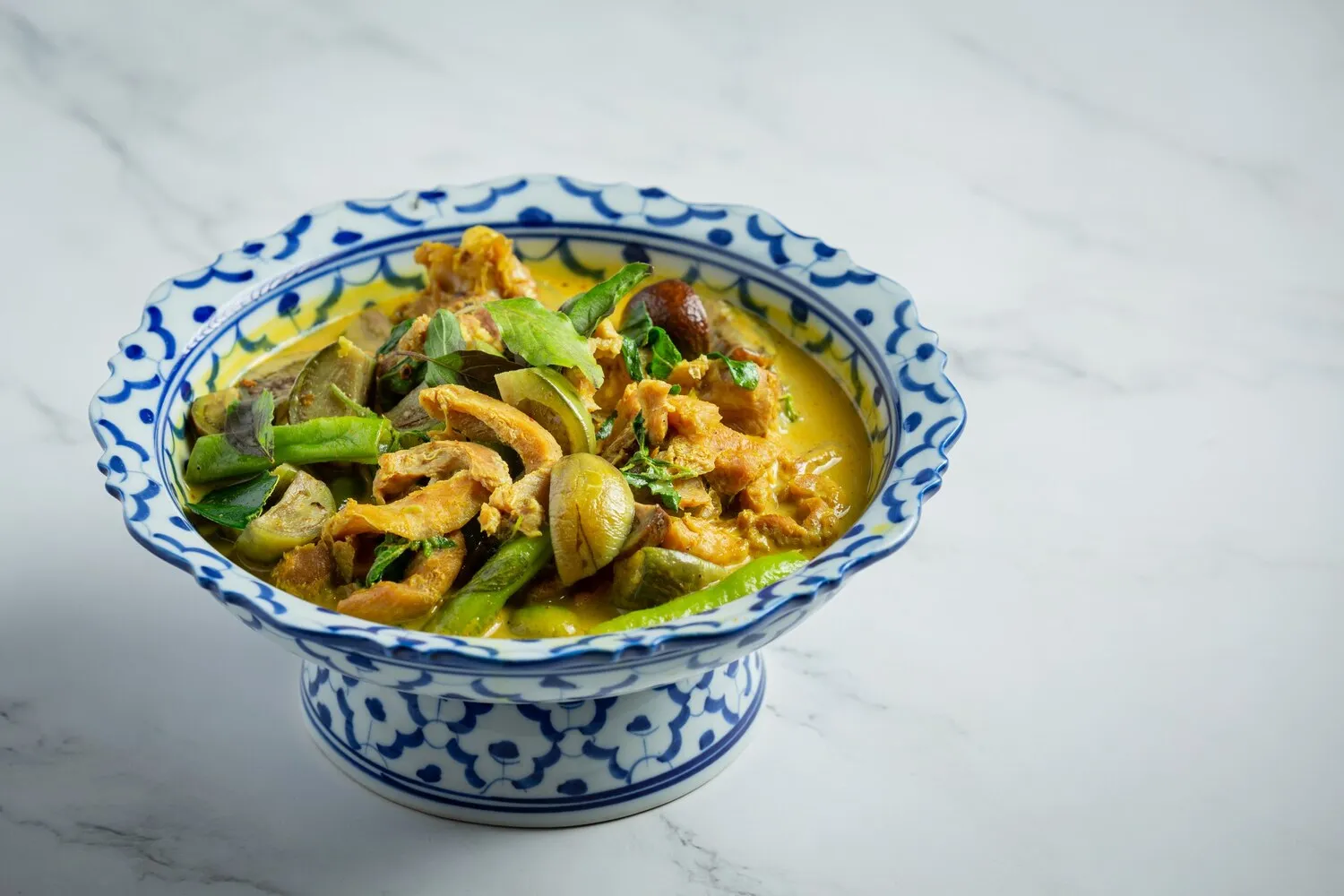
Massaman Curry
A mild, rich and fragrant curry cooked in coconut cream and onion and potato with peanuts.
Nutrition Facts
* The % Daily Value (DV) tells you how much a nutrient in a serving of food contributes to a daily diet. 2,000 calories a day is used for general nutrition advice.
Massaman curry is believed to have originated in the 17th century, influenced by Persian traders and the spice trade routes that passed through the Ayutthaya Kingdom (Siam). The name 'Massaman' is thought to be a corruption of 'Mussulman,' an archaic term for Muslim.
Massaman curry holds a special place in Thai cuisine, often associated with special occasions and served to impress. Its complex flavor profile and historical ties make it a dish that represents a fusion of cultures within Thailand.
Royal Cuisine
Massaman curry is sometimes considered a 'royal' dish, implying a higher level of skill and complexity in its preparation. It is frequently featured on restaurant menus catering to tourists and locals alike.
Religious Influences
Its origins linked to Muslim traders mean it's often made with meats suitable for halal consumption, like beef and chicken, although pork versions exist in some regions. The use of spices like cinnamon and cardamom also reflect the Middle Eastern influence.
Fusion Dish
The use of ingredients like potatoes, peanuts, and warming spices alongside typically Thai ingredients like fish sauce and coconut milk showcases how Massaman curry is a perfect example of a fusion cuisine, born out of trade and cultural exchange.
Massaman curry is a rich, relatively mild Thai curry characterized by a unique blend of sweet, savory, and subtly spicy flavors. Warming spices like cinnamon and cardamom are key, balanced by coconut milk, fish sauce, tamarind, sugar, and chiles.
The curry paste typically includes dried chilies (for heat), coriander seeds, cumin, lemongrass, galangal, white pepper, cloves, cinnamon, cardamom, nutmeg, and sometimes mace. Coconut milk forms the creamy base. Tamarind paste provides a sour tang, while palm sugar or sugar balances the acidity. Fish sauce adds umami. Common additions include potatoes and peanuts, reflecting foreign influences, often alongside meats like beef, chicken, or lamb.
Homemade Paste is Key
While store-bought curry paste can be used, making your own from scratch allows you to control the spice level and flavor profile. Toasting the whole spices before grinding them enhances their aroma.
Quality Coconut Milk Matters
Use full-fat coconut milk for the richest flavor and creamiest texture. Avoid coconut milk with added gums or stabilizers.
Don't Skip the Tamarind
Tamarind paste provides a crucial sour element that balances the sweetness and spice. Adjust the amount to your preference.
Low and Slow Cooking
Allowing the curry to simmer gently for an extended period helps the flavors meld together beautifully and tenderizes the meat.
Potatoes and Peanuts
Don't overcook the potatoes and peanuts. The potatoes should be tender but not mushy, and the peanuts should retain some of their crunch.
Explore additional Curry dishes and restaurants
Explore CurryDiscover top dining spots and culinary experiences in Toowoomba.
Explore ToowoombaLearn more about the food culture, restaurant scene, and culinary heritage of Australia.
Explore Australia